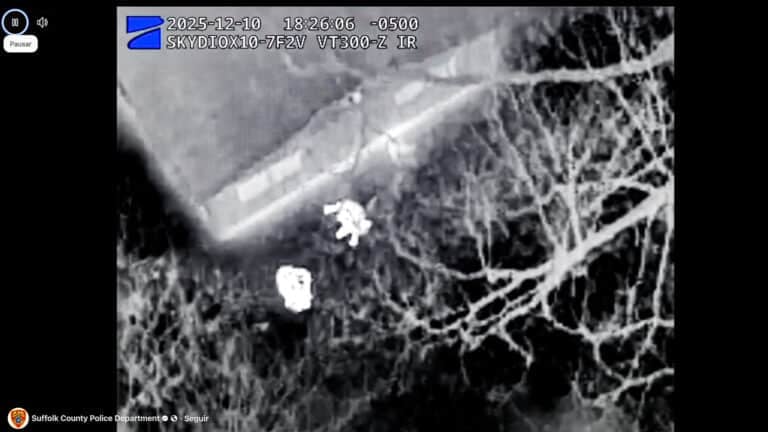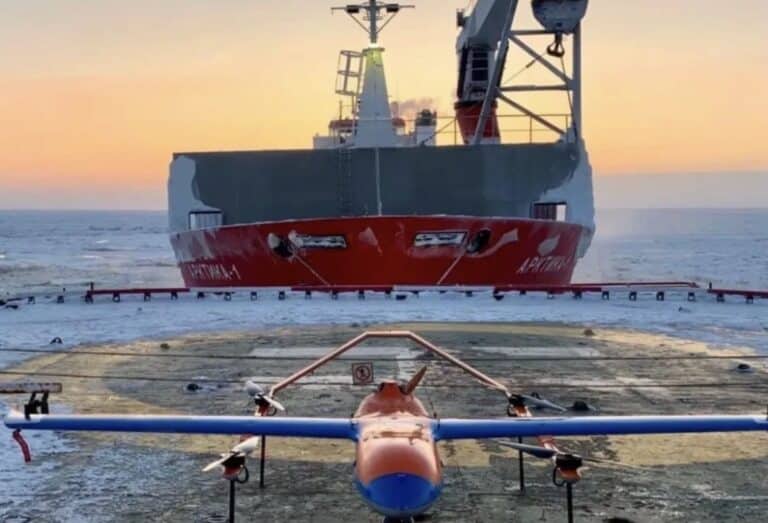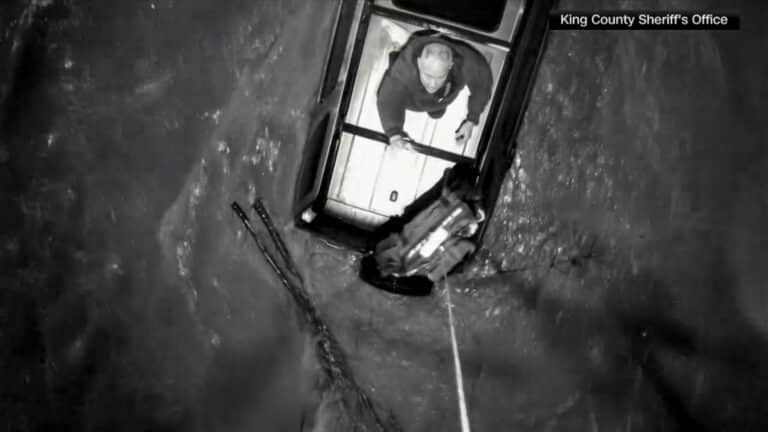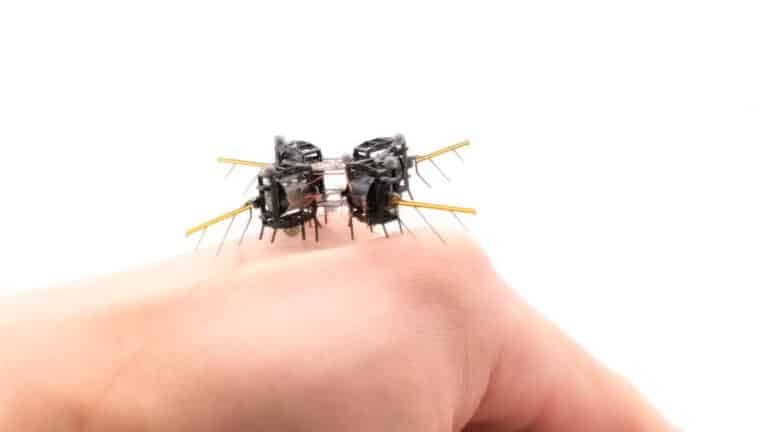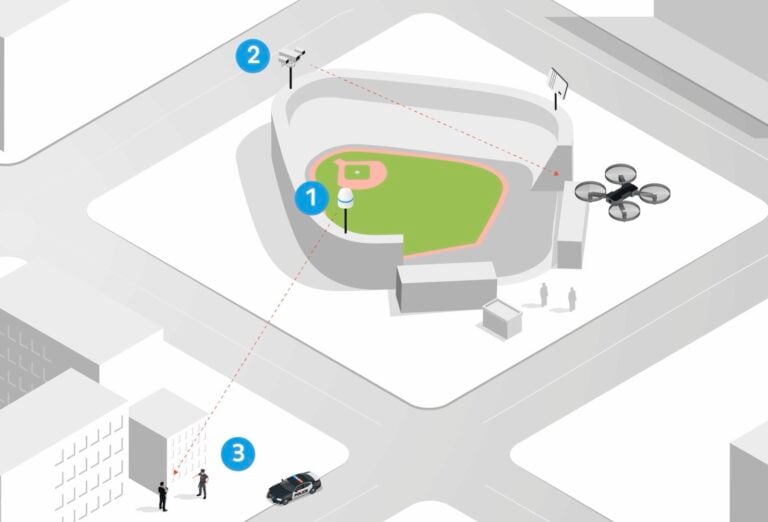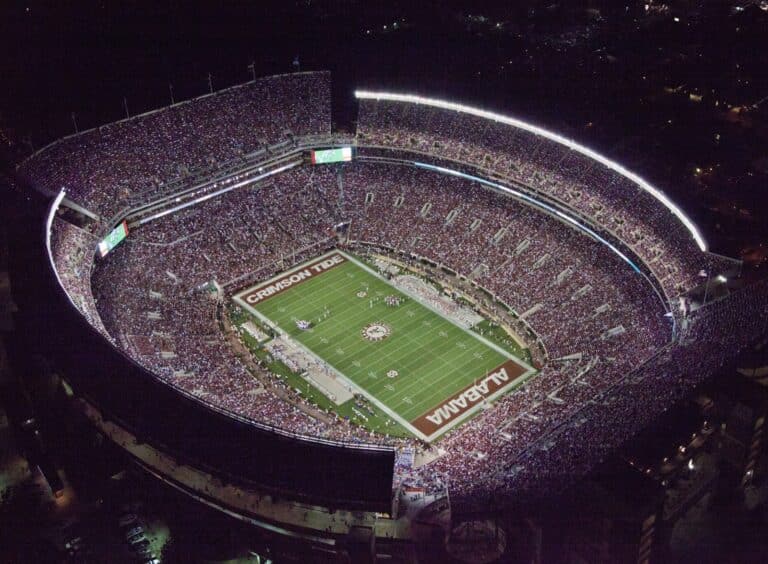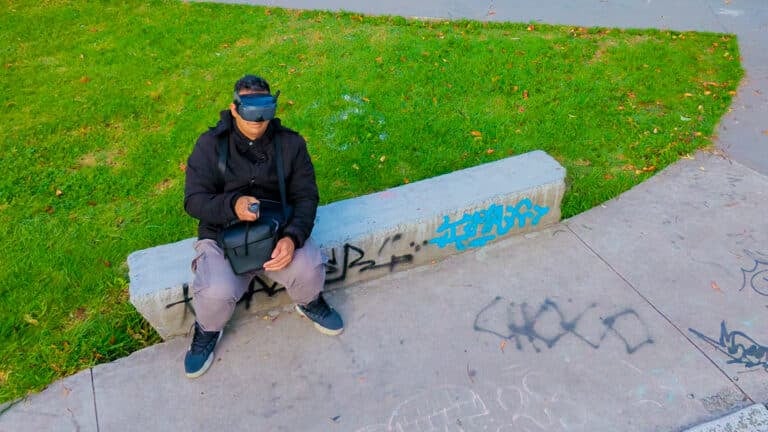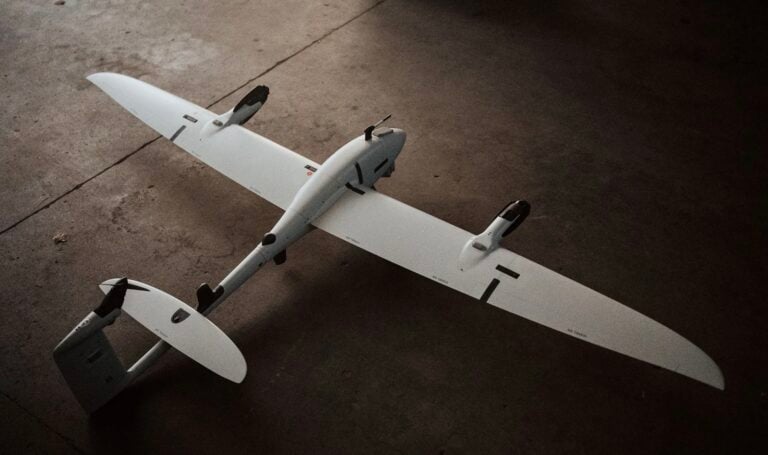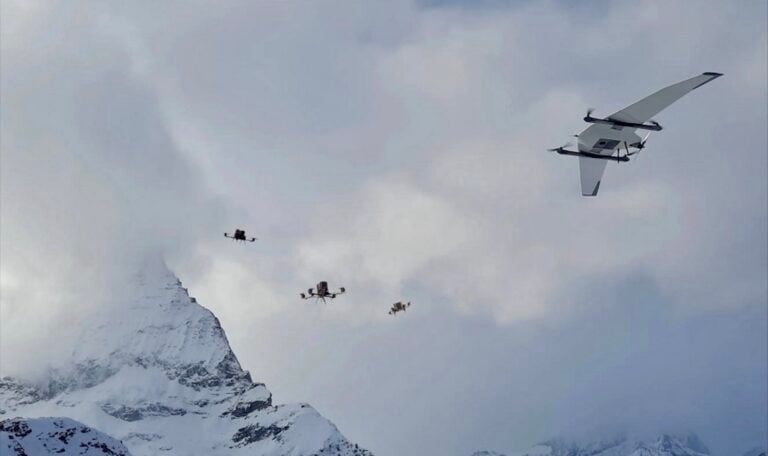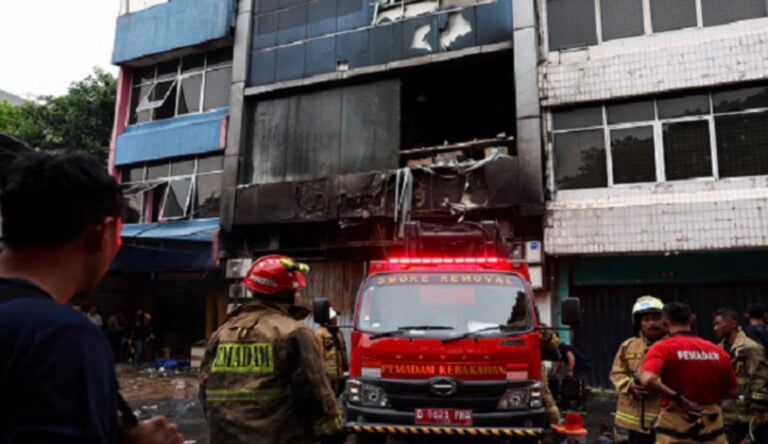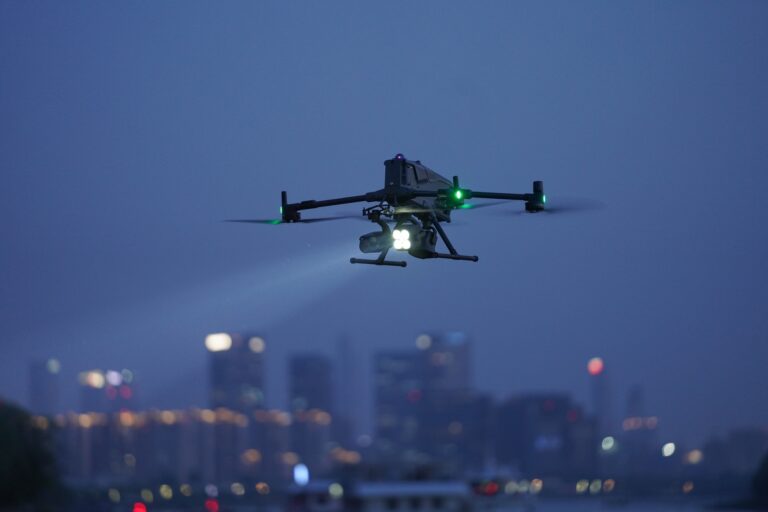Victorville Becomes First Contract City To Launch BRINC Drone First Responder Program With $832K State-Funded Deal

Amazon Drone Deals: DJI Mini 5 Pro Fly More Combo with DJI RC2 now for $1,099!
The City of Victorville is set to become the first contract city with the San Bernardino County Sheriff’s Department to implement a Drone as First Responder (DFR) program, following a unanimous City Council vote earlier this month that approved an $832,000 three-year contract with BRINC Drones.
The initiative positions the Southern California desert city at the forefront of automated aerial emergency response, with drones deployed from automated launch sites across Victorville beginning in early 2026. The program will integrate with the city’s existing public safety technology network, which already includes ShotSpotter gunshot detection and 123 automatic license plate readers.
State Law Enforcement Funds Power Drone Program
Victorville’s DFR program will be funded entirely through Supplemental Law Enforcement Services Funds provided by Assembly Bill 3229, a 1996 California law that established the Citizens Option for Public Safety (COPS) program. The three-year service agreement with Seattle-based BRINC Drones, Inc. totals $831,929.18 and represents one of the more cost-efficient DFR implementations in California, averaging approximately $277,000 per year.
The remotely operated drones will be controlled by FAA-licensed pilots and stream high-definition video directly to the Victorville Police Department’s real-time crime center, according to a written statement from the city. This centralized command approach mirrors successful DFR deployments in other California jurisdictions while maintaining regulatory compliance.
BRINC Technology Provides Tactical Intelligence Before Officer Arrival
The DFR system will provide first responders with crucial details including location, direction of travel, and potential safety threats before officers arrive on scene. “Since drones provide overwatch, they are useful in confirming or ruling out the presence of weapons and any other safety concerns,” the city’s statement noted, emphasizing the technology’s value as a de-escalation tool and for improving officer situational awareness.
BRINC’s Responder drones can typically reach emergency scenes within 70 seconds of dispatch and provide approximately 40 minutes of flight time per deployment. The aircraft return to automated charging stations after missions, requiring only 40 minutes to recharge from 0 to 100%, according to BRINC’s technical specifications.
The drones feature multiple mission-critical capabilities including high-resolution cameras, thermal imaging, two-way audio communication, and emergency lights and sirens. BRINC’s LiveOps software platform manages the entire system through modern web browsers, offering features like remote teleoperations, district-wide deployment management, augmented reality overlays, and integrated airspace awareness.
Contract City Model Creates New DFR Deployment Framework
Victorville’s status as a contract city—meaning it contracts with the San Bernardino County Sheriff’s Department for law enforcement services rather than operating its own independent police department—makes this DFR implementation particularly significant. The arrangement could establish a template for other contract cities throughout California and nationwide that seek to implement advanced drone technology without managing standalone police departments.
“By aligning our investments with community needs and data-driven strategies, we aim to create safer neighborhoods and ensure that every dollar spent delivers measurable value to the people we serve,” said Victorville Mayor Liz Becerra. “Equipping our emergency responders with the technology they need to be more effective and proactive is an important strategy in our efforts to increase safety in Victorville.”
The city’s population of approximately 134,000 residents will be served by the automated drone network, though specific details about the number of drones included in the contract and the exact locations of launch sites have not been disclosed. The program builds on Victorville’s commitment to technology-driven public safety, complementing its existing ShotSpotter gunshot detection system and extensive automatic license plate reader network.
California DFR Adoption Accelerates Despite Regulatory Hurdles
Victorville joins a growing number of California municipalities implementing DFR programs, despite the state’s Assembly Bill 481 requirements that classify drones as “military equipment” requiring public approval. The legislation, enacted in 2022, mandates that law enforcement agencies obtain city council approval and maintain transparency about drone operations, including annual public reports on usage and costs.
The funding mechanism through AB 3229’s Supplemental Law Enforcement Services Funds demonstrates how decades-old public safety funding structures are being adapted for modern drone technology. The 1996 law was originally designed to support frontline municipal police services including county jails, police, sheriff, and district attorney services—now extending to unmanned aerial systems nearly 30 years after its enactment.
BRINC, founded in 2017 by Blake Resnick following the Las Vegas Route 91 festival shooting, has rapidly become a dominant player in the public safety drone market. The company secured $75 million in Series C funding in April 2025, bringing its valuation to over $400 million, and maintains more than 500 active contracts across its product range.
DroneXL’s Take
Victorville’s DFR program represents an important evolution in how contract law enforcement agencies can implement cutting-edge technology. At approximately $277,000 per year, this deployment is considerably more cost-efficient than some of California’s recent DFR contracts—Newport Beach approved $2.17 million over five years ($434,000 annually) in February 2025, while Oceanside’s pilot program cost $264,816 for its initial deployment.
The contract city model deserves close attention. San Bernardino County has numerous contract cities that could follow Victorville’s lead, potentially creating economies of scale for DFR technology across the region. This differs from the traditional municipal police department approach we’ve seen in other California jurisdictions.
California’s DFR landscape has become increasingly complex in 2025. While LAPD expanded drone use to routine emergency calls in June, we also covered Eureka Police withdrawing their drone research proposal in October after organized community opposition, despite documented use cases including water tower negotiations and missing children searches. The Chula Vista legal battle over drone footage public records shows how transparency requirements under California law continue to shape program implementation.
BRINC’s dominance in California is notable. Our coverage shows they’ve secured major contracts in Newport Beach, Oceanside, and beyond California in jurisdictions like Redmond, Washington, Syracuse, New York, and Lee County, Florida. The company’s strategic alliance with Motorola Solutions, announced with their $75 million funding round, positions them to integrate seamlessly with existing emergency response infrastructure—exactly what Victorville is implementing.
The use of 1996-era law enforcement funding for 2025 drone technology raises interesting questions about how public safety budgets adapt to technological change. AB 3229 was designed for traditional policing needs nearly three decades ago, yet its flexibility now enables municipalities to deploy automated aerial response systems that were pure science fiction when the law was written.
One concern: Victorville’s integration of DFR with ShotSpotter and 123 ALPRs creates a comprehensive surveillance network that will require careful oversight. We’ve consistently reported on the privacy concerns surrounding police drone programs, and the combination of these technologies deserves transparent community engagement—something AB 481 mandates but enforcement varies widely.
What do you think about contract cities implementing DFR programs? Should this model be replicated across California’s numerous contract law enforcement jurisdictions? Share your thoughts in the comments below.
Discover more from DroneXL.co
Subscribe to get the latest posts sent to your email.
Check out our Classic Line of T-Shirts, Polos, Hoodies and more in our new store today!

MAKE YOUR VOICE HEARD
Proposed legislation threatens your ability to use drones for fun, work, and safety. The Drone Advocacy Alliance is fighting to ensure your voice is heard in these critical policy discussions.Join us and tell your elected officials to protect your right to fly.
Get your Part 107 Certificate
Pass the Part 107 test and take to the skies with the Pilot Institute. We have helped thousands of people become airplane and commercial drone pilots. Our courses are designed by industry experts to help you pass FAA tests and achieve your dreams.

Copyright © DroneXL.co 2025. All rights reserved. The content, images, and intellectual property on this website are protected by copyright law. Reproduction or distribution of any material without prior written permission from DroneXL.co is strictly prohibited. For permissions and inquiries, please contact us first. DroneXL.co is a proud partner of the Drone Advocacy Alliance. Be sure to check out DroneXL's sister site, EVXL.co, for all the latest news on electric vehicles.
FTC: DroneXL.co is an Amazon Associate and uses affiliate links that can generate income from qualifying purchases. We do not sell, share, rent out, or spam your email.




